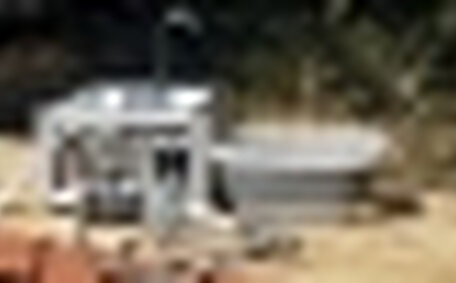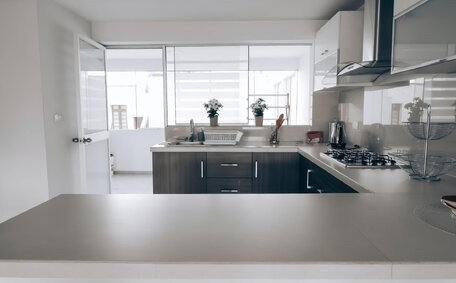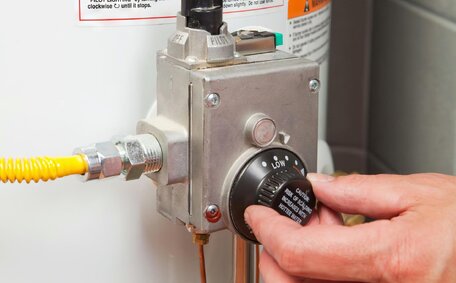Introduction to Safety Relief Valves
The pressure relief valve, commonly termed a safety relief valve, is an essential part of home hot water systems. Functioning as temperature and pressure regulators, these valves allow excess heat and pressure to escape, preventing tank overpressure. This action of the temperature pressure relief mechanism prevents explosions or ruptures that could lead to severe property damage or personal injury.
At Riverwood Plumbing, we promptly service and replace safety relief valves when issues arise. We want to educate homeowners on how these valves function so you can monitor them appropriately and contact a professional like us if you have any concerns.
Discover essential insights on:
- How safety relief valves work
- Normal operating conditions to watch for
- Signs of a failing or faulty valve
- Recommended testing procedures
- Maintenance tips to prolong valve lifespan
- When to engage a licensed plumber for valve issues
Understanding these key aspects can help prevent serious failures in your water tank and ensure ongoing safety in your home.
What Are Safety Relief Valves and Why Are They Important?
Hot water system relief valves, equipped with spring-loaded mechanisms, are devised for regulating water heater pressure, situated near the upper part of your hot water tank. When activated, they need open to release excess pressure or heat if your system exceeds safe temperature or pressure thresholds - usually 150 PSI and 210°F.
Regular testing of the TPR valve is crucial for ensuring proper functionality. Without a functional TPR valve, pressure can build uncontrollably within the sealed system until an explosion occurs. This can destroy the tank and send scalding water and dangerous shrapnel flying, posing severe risks of property damage, severe burns, and even loss of life.
By auto-regulating and discharging water, TPR valves serve as a pivotal aspect of safety your residence depends on to prevent potential catastrophic malfunctions. They are indispensable for safely operating any household hot water system in Riverwood, Sydney and elsewhere. If you notice irregularities in TPR valve operation, it’s imperative to consult licensed plumbers like Riverwood Plumbing.
How Do Safety Relief Valves Regulate Temperature and Pressure?
The hot water temperature relief valve features a spring-loaded design that equally regulates temperature and pressure in water systems. The valve remains closed under normal operating conditions. Yet, if the pressure inside the tank soars above 210°F or exceeds 150 PSI, the valve will engage automatically to dispel excessive heat or pressure.
Below is a straightforward explanation of this regulation process:
- A compressed spring sits behind the valve disc, keeping the valve sealed shut under normal conditions.
- If temperature rises too high, expanding water in the tank pushes against the spring until calibrated tension is exceeded.
- Once the spring’s tension limit is exceeded, the valve opens, directing steam and excess water through the discharge pipe into the drain line.
- The release and subsequent relief of hot water pressure and associated changes in water level and thermal expansion causes the spring to recompress, nudging the valve disc back to its closed state.
- The heating cycle repeats as needed to maintain safe temperature/pressure parameters below 210°F and 150 PSI.
The same process unfolds when water heater pressure relief valve activation is necessary, with spring tension being surpassed to vent excess pressure down the drain line. This automatic regulation prevents dangerous overpressurisation or overheating.
Safety valve mechanisms are meticulously calibrated and thoroughly tested to open within a 5 PSI margin of their 150 PSI threshold. Executing a valve check and releasing surplus pressure/heat prior to hitting perilous levels are key preventative actions against explosions and grave malfunctions.
Where Are Safety Relief Valves Located on Hot Water Systems?
The TPR valve’s location may differ based on your hot water system type, but it is always installed near the top of the tank itself on storage-style heaters or along the heat exchanger pipe in tankless systems. This placement ensures that excess heat and pressure are safely vented before they can compromise the system’s integrity.
On most standard storage tank water heaters, you’ll find the TPR valve directly on top of the tank toward the front, where it monitors hot water pressure. It will have a discharge pipe that runs down the side of the tank and diverts hot water safely toward a drain if activated.
In some non-standard storage heater designs, expect the drain valve bottom to be located while the valve may be placed horizontally on the heater’s side near the top instead of the traditional vertical orientation. Conduct a visual inspection around the upper tank connections to determine what water pathways lead to the valve.
On demand-style tankless water heaters, the TPR valve is installed along the heat exchanger piping, typically positioned near the top where cold water outlets to fixtures. You may need to trace plumbing connections to find it. The discharge tube should run safely to a floor drain.
If the safety relief valve is difficult to find or access, it’s wise to contact Riverwood Plumbing for a thorough assessment. Our licenced technicians can locate and inspect this critical safety component during annual maintenance.
Signs of Safety Relief Valve Failure
There are several key signs that indicate when a safety relief valve may be failing and require replacement:
- Water leaking/spitting from the valve or connected pipes. Signs of valve leakage or continuous flow indicate seal issues that require immediate inspection.
- Failure to open and release water when overpressurised systems reach unsafe thresholds. Test functionality by manually lifting the valve to confirm it releases pressure correctly.
- The valve opens but does not properly reseal once calm, continuing to leak. TPR valves are designed to valve open for fleeting moments, solely to alleviate surplus heat/pressure, then promptly revert to a secure, sealed condition.
- Corrosion visible around the valve or connected pipes. Mineral deposit buildup and rust compromises the spring tension, preventing your valve from operating within calibrated thresholds.
- A loud noise when hot water runs, suggesting internal issues. Relief valves can also release bursts of water silently down the drain line. Noisy operation could indicate loose internal components or a weakened spring.
Should any concerns arise regarding your electric hot water system’s safety relief valve after considering these warning signs, promptly reach out to Riverwood Plumbing. Attempting to repair relief valves carries risks of serious burns or tank explosions if mishandled. Our certified and insured experts are skilled at safely replacing various types of valves, whether in electric or gas hot water systems.
Testing and Maintenance of Safety Relief Valves
Regular testing and maintenance of your relief valve is essential to prevent system failures and maintain safety. It is recommended to test TPR valves biannually and replace them every five years, in line with industry standards.
Testing Your Safety Relief Valve
You should test your system’s valve twice per year to assure it continues to function properly. This helps confirm the valve will activate and is working properly to prevent explosions if excess pressure builds in your system.
Exercise caution during this process, as released water can be scalding. Prepare a bucket, a rag and a pipe wrench. Follow these steps to open the valve:
- Locate the TPR valve to let water out during testing on your hot water system.
- Connect a garden hose or a 1-1.2 meter section of PVC pipe to the drain line to safely redirect the water.
- Manually lift and open the testing lever on the release valve to allow water through.
- A steady water flow through the drain line signals proper valve operation. Let the water flow several times, with each lasting up to 30 seconds.
- Should there be minimal or no water discharge, it would indicate a need to replace valve elements.
Routine Maintenance
To keep your TPR in sound working order:
- Visually inspect it yearly for corrosion and mineral deposits.
- Carefully clear away any debris around the valve outlet and drain line.
- Ensure the drain line is extended to a safe location.
- Replace the valve every 5 years as preventative maintenance.
Testing and maintaining pressure relief valves only takes a few minutes yet is vital to avert disastrous system failures. If you have any uncertainty, the expert plumbing services at Riverwood Plumbing can assess your valve during our affordable maintenance plans.
Replacing Faulty Safety Relief Valves
If testing and maintenance do not restore functionality, your safety relief valve likely needs replacement.
Signs that your TPR valve is beyond repair and needs replacing include:
- Failure to open and release water pressure during testing
- Inability to reseal after releasing water, resulting in leaks
- Visible corrosion and excessive mineral buildup
- Noisy operation, signalling internal damage
Replacing your old TPR valve carries risks of severe burns if mishandled. As licenced professionals, Riverwood Plumbing’s technicians have the expertise to safely swap out faulty valves in compliance with Australian Plumbing Code regulations.
Our valve replacement process includes:
- Shut off the water supply and depressurising the system
- Performing a drain your tank step if needed to access the valve
- Disconnecting and removing the old relief valve
- Installing the new valve using non-hardening thread sealant, like Teflon tape, to ensure a secure connection to the discharge line
- Checking for leaks and ensuring proper resealing
- Testing operation by manually releasing pressure
Replacing a faulty relief valve can cost between $175 and $350, depending on the type of hot water system. This small investment can prevent extensive property damages and serious injuries.
For urgent maintenance or replacements of your hot water heater relief valves, contact our Riverwood Plumbing team on 1300 349 338.
When to Call a Professional Plumber
There are a few key times when it is critical to contact a licenced professional plumber to assess or service your hot water system’s safety relief valve:
- If you observe any leaking from the valve itself or connected pipes, an urgent repair is needed. Leaks indicate the valve is not properly sealing and should not be ignored.
- If your valve fails to open and release excess pressure when tested manually. A valve no longer capable of mitigating pressure places your system in grave danger when overpressurised.
- To carry out preventative valve replacements, including the check valve, every 5 years and confirm the drain line connections during your routine maintenance checks.
- If attempting to clear mineral deposits or service corrosion issues yourself proves unsuccessful after basic troubleshooting steps.
- For complete hot water system replacements, as the relief valve will need to be swapped out with the old unit and properly integrated on the new system.
At Riverwood Plumbing, we get to the core of issues with our comprehensive know-how in servicing and replacing faulty or ageing safety relief valves for all standard residential water heater models. We want to ensure the ongoing safety of your home and protect your family.






